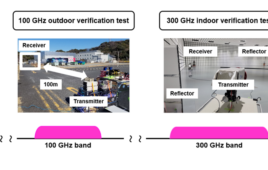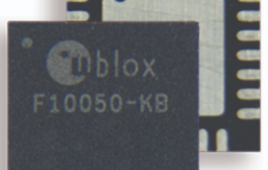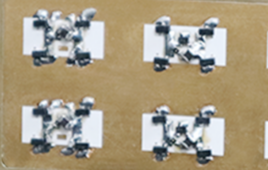The U.S. Army is researching how to leverage smart cities of the future where networks of sensors will be used to enable services for civilian and government use, such as environmental monitoring or traffic flow optimization.
Smart city environments have emerged from continued growth in urban internet of things, or IoT, infrastructure, where devices connect to the web, integrate capabilities and use data analytics to extract meaningful information.
Researchers at the U.S. Army Combat Capabilities Development Command’s Army Research Laboratory, the Army’s corporate research laboratory also known as ARL, are investigating how IoT could complement the capabilities of military assets in urban operations–with smart city infrastructures supporting the emerging internet of battlefield things, or IoBT.
This research also supports Army modernization efforts in delivering a network that guarantees the Army can prepare for war and fight and win against any adversary and in any condition.
“For IoBT systems to successfully utilize commercial IoT assets with minimal mission risk, expanded knowledge becomes necessary on the reliability and interoperability of commercial IoT protocols in urban environments,” said Dr. James Michaelis, an ARL computer scientist.
Commercial IoT systems rely on a collection of communication protocols to facilitate data ingest, which vary based on geographic coverage and amount of data that can be transmitted.
Army-funded researchers focused on a communication protocol: Long Range Wide Area Network, known as LoRaWAN, and presented their findings in April 2019 at the IEEE 5th World Forum on Internet of Things (Leveraging LoRaWAN to Support IoBT in Urban Environments).
LoRaWAN has gained visibility among the various communication protocols due to its low power needs and ability to transmit data over long ranges within IoT infrastructures.
In ideal conditions, LoRaWAN has demonstrated success in IoT device transmissions beyond 10 kilometers; however, the current body of knowledge around LoRaWAN is limited in empirical data on its coverage in the presence of dense, potentially obstructing urban infrastructure.
To study these capabilities, Army-funded researchers used vehicle-mounted IoT transmitters to conduct a comprehensive test of LoRaWAN coverage in Montreal. Researchers found that the maximum transmission distance across Montreal’s central business district could reliably be established five kilometers from the receiver. This distance was achieved for three separate LoRaWAN data transmission rates–each capable of transmitting different-sized IoT device messages–on the North American industrial, scientific and medical 915 MHz band. These findings help reinforce the reliability of LoRaWAN in the presence of dense urban infrastructure.
To support the LoRaWAN testing, researchers applied a combination of ARL-developed IoT architecture and a collection of commercially available hardware and software. ARL initially developed the architecture to support integration of commercial-off-the-shelf assets into broader C2 systems to support situational awareness and decision support capabilities in tactical operations centers.
Researchers are applying data from this testing to two additional areas of research–coverage gap analysis, which assesses conditions where LoRaWAN coverage may be obstructed, and data rate coverage, which assesses impact of data transmission rate on LoRaWAN coverage.




